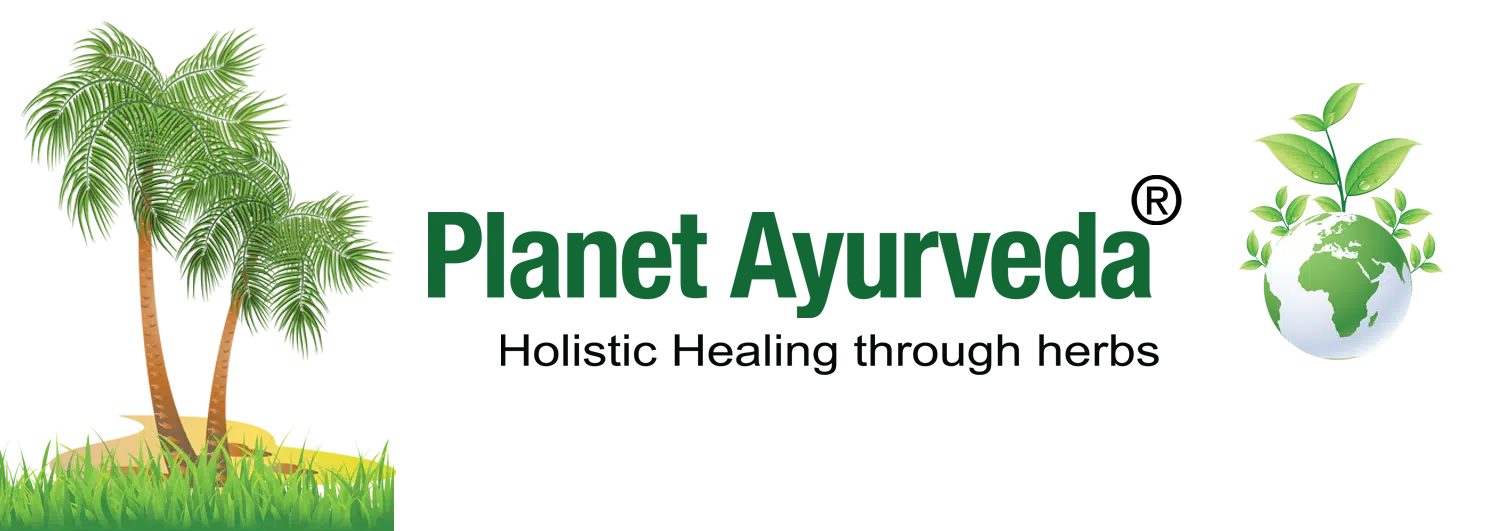Abhrak Bhasma Sahastraputi – Medicinal Properties, Ingredients, Indications, Dosage & More
Reference : Rasatantrasaar and Siddhaprayog Sangraha / Part 1 / Bhasma Prakaran / Page No. 75
Abstract
In Ayurvedic Rasashastra, Bhasmas are unique calcined preparations derived from metals or minerals, which undergo extensive Shodhana (purification) and controlled Marana (incineration) to transform them into bioavailable, therapeutically effective forms. These preparations hold a significant place in Ayurveda due to their ability to deliver potent therapeutic effects with minimal toxicity. Among the various Bhasmas, Abhrak Bhasma, prepared from mica, is highly esteemed for its remarkable Rasayana (rejuvenating) properties. It is widely used to enhance vitality, support respiratory health, improve cognition, and balance the body’s doshas.
Introduction
The Sahastraputi technique involves performing a thousand cycles of puta (incineration) to prepare Abhrak Bhasma, an Ayurvedic medicine made from mica. This careful and repeated process helps to thoroughly purify the raw material and improve the physical and chemical properties of the final product. As a result, the Bhasma becomes finer, more stable, and more effective biologically. Because of these enhancements, Abhrak Bhasma made using the Sahastraputi method shows better therapeutic effects and safety, making it an important formulation in Ayurvedic treatments, especially for rejuvenation and overall health.
Ingredients
Primary Mineral
Abhrak (Mica): purified before use
Kwath Dravya (Decoction base)
- Ark Dugdha (Calotropis gigantea)
- Thuhar Dugdha (Calotropis procera)
- Bargad ki Jata Kwath (Ficus benghalensis)
- Gheekunwar Ras (Aloe barbadensis Miller)
- Erandi Patton ka Ras (Ricinus communis)
- Nagar Motha Kwath (Cyperus rotundus)
- Giloy Swarasa (Tinospora cordifolia)
- Chhoti Kateli Kwath (Solanum virginianum)
- Badi Kateli Kwath (Solanum indicum)
- Gokhru Kwath (Tribulus terrestris)
- Bhang Kwath (Cannabis sativa)
- Kukarondha Swarasa (Blumea lacera)
- Sahdei Ras (Sida rhombifolia)
- Nagbala Kwath (Sida veronicaefolia)
- Atibala Kwath (Abutilon indicum)
- Khireti Kwath (Solanum indicum)
- Tulsi Ras (Ocimum sanctum)
- Shalparni Kwath (Desmodium gangeticum)
- Prishniparni Kwath (Uraria picta)
- Kasondi Patton ka Swarasa (Cassia occidentalis)
- Arani Chhal Kwath (Clerodendrum multiflorum)
- Bel Patton ka Kwath (Aegle marmelos)
- Devdaru Kwath (Cedrus deodara)
- Kalimirch Kwath (Piper nigrum)
- Adarak Swarasa (Zingiber officinale)
- Peepal Kwath (Ficus religiosa)
- Chitrakamool Kwath (Plumbago zeylanica)
- Indrayan Jad Kwath (Citrullus colocynthis)
- Lodh Kwath (Symplocos racemosa)
- Kutki Kwath (Picrorhiza kurroa)
- Jamun Chhal Kwath (Syzygium cumini)
- Amla Swarasa (Phyllanthus emblica)
- Harad Kwath (Terminalia chebula)
- Baheda Kwath (Terminalia bellirica)
- Aduse Swarasa (Adhatoda vasica)
- Tendu Chhal Kwath (Diospyros tomentosa)
- Apamarg Kwath (Achyranthes aspera)
- Maulsari Satvan Chhal Kwath (Mimusops elengi)
- Dhatura Patton ka Swarasa (Datura stramonium)
- Safed Sarson Kwath (Sinapis alba)
- Bhangra Swarasa (Eclipta prostrata)
- Godugdh (Cow’s Milk)
- Agastya Patton ka Ras (Sesbania grandiflora)
- Badi Torai Ras (Luffa cylindrica)
- Gomutra (Cow Urine)
- Paadhal Kwath (Stereospermum suaveolens)
- Talis Patraka Kwath (Abies spectabilis)
- Kele Ke Khambhe ka Ras (Musa paradisiaca)
- Bakre ka Rakt (Goat Blood)
- Musli Kwath (Chlorophytum borivilianum)
- Aswagandh Kwath (Withania somnifera)
- Durva Kwath (Cynodon dactylon)
- Devdali Panchang Kwath (Mixed ingredients)
- Matsyakshi Ras (Alternanthera sessilis)
- Makoy Ras (Solanum nigrum)
- Punarnava Ras (Boerhavia diffusa)
- Shankhpushpi Ras (Convolvulus pluricaulis)
- Nagarbel Patton ka Ras (Piper betle)
- Khair Chhal Kwath (Acacia catechu)
- Brahmi Ras (Bacopa monnieri)
- Jatamansi Kwath (Nardostachys jatamansi)
- Dhamase Kwath (Fagonia cretica)
- Amaltas Phali Kwath (Cassia fistula)
- Akash Bel Kwath (Cassytha filiformis)
- Chameli Patton ka Kwath (Jasminum officinale)
- Kale Jeere Kwath (Nigella sativa)
- Gorakhmundi Kwath (Sphaeranthus indicus)
- Musakarni ke Patton ka Swarasa (Evolvulus nummularius)
- Bharangi Kwath (Clerodendrum serratum)
- Shatavari Ras (Asparagus racemosus)
- Vidarikand Ras (Pueraria tuberosa)
Description of Ingredients
1. Abhrak (Mica)
Abhrak (Mica) is a mineral used in Ayurveda after purification to enhance vitality, strengthen respiratory function, and balance all three doshas. It is commonly employed to support chronic respiratory ailments and boost overall energy.
2. Ark Dugdha (Calotropis gigantea)
Ark Dugdha (Calotropis gigantea) is traditionally used to treat skin diseases, digestive problems, and respiratory issues. It has anti-inflammatory and analgesic properties and is also considered an antidote for snake bites.
3. Thuhar Dugdha (Calotropis procera)
Thuhar Dugdha (Calotropis procera) is known for relieving rheumatic pain, paralysis, and respiratory ailments due to its analgesic and expectorant effects. It balances Vata and Kapha doshas.
4. Bargad ki Jad Kwath (Ficus benghalensis)
Bargad ki Jad Kwath (Ficus benghalensis) serves as a remedy for diabetes, diarrhea, and leucorrhea. It helps in wound healing and balancing Kapha and Vata doshas due to its anti-inflammatory and antioxidant constituents.
5. Gheekunwar Ras (Aloe barbadensis Miller)
Gheekunwar Ras (Aloe barbadensis Miller) is widely used to promote skin health, aid digestion, and support liver detoxification. Its polysaccharides provide moisturizing and anti-inflammatory benefits.
6. Erandi Patton ka Ras (Ricinus communis)
Erandi Patton ka Ras (Ricinus communis) acts as a laxative and helps alleviate rheumatism and skin disorders. Its active compound, ricinoleic acid, contributes to its anti-inflammatory and analgesic effects.
7. Nagar Motha Kwath (Cyperus rotundus)
Nagar Motha Kwath (Cyperus rotundus) is a digestive stimulant and anti-inflammatory herb. It is commonly used to reduce fever and balance Vata and Kapha doshas.
8. Giloy Swarasa (Tinospora cordifolia)
Giloy Swarasa (Tinospora cordifolia) is a powerful immune booster that also supports liver function and reduces inflammation. It contains alkaloids and diterpenoid lactones responsible for its therapeutic effects.
9. Chhoti Kateli Kwath (Solanum virginianum)
Chhoti Kateli Kwath (Solanum virginianum) is used in respiratory conditions as an expectorant and anti-inflammatory agent. It helps clear mucus and balance Kapha dosha.
10. Badi Kateli Kwath (Solanum indicum)
It is known for managing asthma, cough, and fever by acting as a bronchodilator and anti-inflammatory agent.
11. Gokhru Kwath (Tribulus terrestris)
Supports urinary tract health and reproductive vitality. It contains saponins that help in diuresis and hormonal balance.
12. Bhang Kwath (Cannabis sativa)
Is used in controlled amounts for pain relief, anti-inflammatory effects, and digestive support through its cannabinoids.
13. Kukarondha Swarasa (Blumea lacera)
Promotes liver health and treats skin disorders, possessing antioxidant and antimicrobial properties.
14. Sahdei Ras (Sida rhombifolia)
Strengthens body tissues and relieves Vata-related disorders such as arthritis due to its anti-inflammatory phytochemicals.
15. Nagbala Kwath (Sida veronicaefolia)
Supports nervous system health and rejuvenation with neuroprotective and adaptogenic effects.
16. Atibala Kwath (Abutilon indicum)
Serves as a general tonic, supporting urinary function and relieving debility with its demulcent and anti-inflammatory properties.
17. Khireti Kwath (Solanum indicum)
Helps treat skin infections and respiratory ailments through its expectorant and anti-inflammatory actions.
18. Tulsi Ras (Ocimum sanctum)
Is renowned for boosting immunity and antimicrobial activity. It contains eugenol and ursolic acid, which provide antioxidant and adaptogenic benefits.
19. Shalparni Kwath (Desmodium gangeticum)
Nourishes tissues and strengthens immunity, exhibiting anti-inflammatory and antipyretic properties.
20. Prishniparni Kwath (Uraria picta)
Balances Vata dosha and supports respiratory health with its anti-inflammatory and bronchodilator effects.
21. Kasondi Patton ka Swarasa (Cassia occidentalis)
Is traditionally used as a liver tonic and to treat skin diseases. It possesses laxative and antimicrobial properties that support detoxification.
22. Arani Chhal Kwath (Clerodendrum multiflorum)
Is valued for its anti-inflammatory and analgesic effects, often used in treating joint pain and respiratory ailments.
23. Bel Patton ka Kwath (Aegle marmelos)
Supports digestive health and regulates blood sugar levels. Its alkaloids and tannins have anti-inflammatory and antioxidant effects.
24. Devdaru Kwath (Cedrus deodara)
Is used for its anti-inflammatory and analgesic properties in arthritis and muscle pain, and also supports respiratory health.
25. Kalimirch Kwath (Piper nigrum)
Acts as a digestive stimulant and bioavailability enhancer. It also exhibits antioxidant and anti-inflammatory activities.
26. Adarak Swarasa (Zingiber officinale)
Is a potent digestive aid with anti-inflammatory and anti-nausea effects, useful in respiratory and joint disorders.
27. Peepal Kwath (Ficus religiosa)
Balances Kapha and Vata doshas and supports respiratory and cardiovascular health with antioxidant and anti-inflammatory phytochemicals.
28. Chitrakamool Kwath (Plumbago zeylanica)
Is known for its digestive stimulant and anti-inflammatory properties, often used to treat fever and skin diseases.
29. Indrayan Jad Kwath (Citrullus colocynthis)
Is a powerful purgative and detoxifying agent that balances Kapha and Pitta doshas.
30. Lodh Kwath (Symplocos racemosa)
Helps in managing bleeding disorders and promotes reproductive health, possessing astringent and anti-inflammatory properties.
31. Kutki Kwath (Picrorhiza kurroa)
Supports liver detoxification and digestive health. It is an anti-inflammatory and hepatoprotective herb.
32. Jamun Chhal Kwath (Syzygium cumini)
Is used to regulate blood sugar and improve digestion with its antioxidant and anti-inflammatory effects.
33. Amla Swarasa (Phyllanthus emblica)
Is a rich source of vitamin C and antioxidants, promoting immunity, digestion, and skin health while balancing all three doshas.
34. Harad Kwath (Terminalia chebula)
Is a potent digestive tonic and mild laxative used extensively to relieve constipation and support gut health.
35. Baheda Kwath (Terminalia bellirica)
Supports respiratory health and detoxification. It has anti-inflammatory and antimicrobial activities.
36. Aduse Swarasa (Adhatoda vasica)
Is an expectorant and bronchodilator, widely used in respiratory disorders like asthma and bronchitis.
37. Tendu Chhal Kwath (Diospyros tomentosa)
Is used for its anti-inflammatory and antimicrobial properties, supporting skin and digestive health.
38. Apamarg Kwath (Achyranthes aspera)
Balances Kapha and Vata doshas and is traditionally used to relieve joint pain and skin diseases.
39. Maulsari Satvan Chhal Kwath (Mimusops elengi)
Is an astringent herb useful in dental health, diarrhea, and skin diseases with antimicrobial effects.
40. Dhatura Patton ka Swarasa (Datura stramonium)
Is a bronchodilator and analgesic used cautiously in respiratory conditions; it contains toxic alkaloids, so must be used under supervision.
41. Safed Sarson Kwath (Sinapis alba)
Is used to stimulate digestion and improve circulation. It has anti-inflammatory and antimicrobial properties.
42. Bhangra Swarasa (Eclipta prostrata)
Is known for its hepatoprotective and hair-strengthening properties, supporting liver health and promoting hair growth.
43. Godugdh (Cow’s Milk)
Is a nourishing tonic used in Ayurveda to balance Vata and Pitta doshas. It strengthens tissues and supports immunity.
44. Agastya Patton ka Ras (Sesbania grandiflora)
Is used to improve digestion and respiratory health, known for its anti-inflammatory and antioxidant effects.
45. Badi Torai Ras (Luffa cylindrica)
Supports liver and digestive health and is traditionally used as a detoxifying agent.
46. Gomutra (Cow Urine)
Is considered a bio-enhancer and detoxifier in Ayurveda, used to support digestion, immunity, and overall vitality.
47. Paadhal Kwath (Stereospermum suaveolens)
Is used for its anti-inflammatory and analgesic properties in joint and respiratory disorders.
48. Talis Patraka Kwath (Abies spectabilis)
Is a resinous herb traditionally used for respiratory ailments and as an anti-inflammatory agent.
49. Kele Ke Khambhe ka Ras (Musa paradisiaca)
Is rich in nutrients, used as a demulcent and digestive tonic in Ayurveda.
50. Bakre ka Rakt (Goat Blood)
Is rarely used and traditionally thought to have strengthening and rejuvenating properties.
51. Musli Kwath (Chlorophytum borivilianum)
Is a renowned aphrodisiac and adaptogen that boosts vitality, immunity, and sexual health.
52. Ashwagandha Kwath (Withania somnifera)
Is a powerful adaptogen and immune modulator that reduces stress, inflammation, and improves stamina.
53. Durva Kwath (Cynodon dactylon)
Is traditionally used for wound healing, bleeding disorders, and as a mild diuretic.
54. Devdali Panchang Kwath (Mixed ingredients)
Is a combination of herbs designed to support detoxification and improve metabolic balance.
55. Matsyakshi Ras (Alternanthera sessilis)
Is used for its anti-inflammatory and diuretic properties, often in urinary tract and skin disorders.
56. Makoy Ras (Solanum nigrum)
Supports liver health and detoxification, and is used for skin ailments and inflammation.
57. Punarnava Ras (Boerhavia diffusa)
Is a potent diuretic and anti-inflammatory herb that supports kidney health and reduces edema.
58. Shankhpushpi Ras (Convolvulus pluricaulis)
Is a brain tonic that enhances memory, cognitive function, and reduces anxiety.
59. Nagarbel Patton ka Ras (Piper betle)
Is known for its antimicrobial and digestive stimulant properties.
60. Khair Chhal Kwath (Acacia catechu)
Is an astringent herb used for diarrhea, bleeding disorders, and inflammation.
61. Brahmi Ras (Bacopa monnieri)
Is a powerful nootropic herb that enhances memory, concentration, and reduces stress and anxiety through its antioxidant and neuroprotective effects.
62. Jatamansi Kwath (Nardostachys jatamansi)
Is known for its calming effect on the nervous system, promoting restful sleep, reducing anxiety, and supporting brain health.
63. Dhamase Kwath (Fagonia cretica)
Is traditionally used for fever, inflammation, and to support immune function with its anti-inflammatory and antioxidant properties.
64. Amaltas Phali Kwath (Cassia fistula)
Acts as a mild laxative and detoxifier, helping in constipation and improving digestion.
65. Akash Bel Kwath (Cassytha filiformis)
Is used in Ayurveda as a tonic for urinary and reproductive health and possesses detoxifying properties.
66. Chameli Patton ka Kwath (Jasminum officinale)
Is valued for its soothing and cooling effects, used in skin disorders and to reduce inflammation.
67. Kala Jeere Kwath (Nigella sativa)
Is a potent antioxidant and immune booster, known for anti-inflammatory, antimicrobial, and digestive benefits.
68. Gorakhmundi Kwath (Sphaeranthus indicus)
Is used to balance the doshas, support skin health, and provide anti-inflammatory and analgesic effects.
69. Musakarni ke Patton ka Swarasa (Evolvulus nummularius)
Is a calming herb used for anxiety, improving memory, and reducing nervous tension.
70. Bharangi Kwath (Clerodendrum serratum)
Is traditionally used to relieve respiratory conditions like asthma and bronchitis with its expectorant properties.
71. Shatavari Ras (Asparagus racemosus)
Is a nourishing adaptogen that supports female reproductive health, boosts immunity, and improves digestion.
72. Vidarikand Ras (Pueraria tuberosa)
Is a rejuvenating tonic known to enhance vitality, improve digestion, and support reproductive health.
Method of Preparation
- Shodhana (Purification): Raw Abhrak is purified using acidic herbs and cow urine.
- Bhavana (Trituration): 16 rounds of bhavana (levigation) with each selected herb.
- Puta (Incineration): Small pellets are prepared and dried in sunlight, then subjected to gajaputa (a traditional incineration method using cow dung cakes).
- Repeat: The above steps are repeated for a total of 1000 puta.
Medicinal Properties
- Rasayana (rejuvenator)
- Balya (strength promoting)
- Yogavahi (catalytic)
- Shothahara (anti-inflammatory)
- Vrishya (aphrodisiac)
- Tridosha Hara (balances all three doshas)
Indications
- Pitta prakop (aggravated Pitta)
- Pitta pradhan prameha (Pitta-dominant diabetes/urinary disorders)
- Netra nirbalata (eye weakness)
- Shraas (dyspnea)
- Kasa (cough)
- Kapha vriddhi (increased Kapha)
- Jeernjaar (chronic illness)
- Bhrama (dizziness)
- Prameha (diabetes/urinary disorders)
- Sangrahani (splenic disorders)
- Paandu (anemia)
- Kshaya (consumption/tuberculosis)
- Vishvikar (poisoning/toxic disorders)
- Kamla (jaundice)
- Gulma (abdominal tumor/mass)
- Shoola (colic/intestinal pain)
- Aam (indigestion/toxins in digestion)
- Kushtha (skin diseases)
- Shwas (asthma)
- Mandayi (weakness/debilitation)
- Udar vyatha (abdominal pain)
- Bees prakar ke prameha (20 types of diabetes/urinary disorders)
- Raktapitta (bleeding disorders)
- Arsha (piles/hemorrhoids)
- Vata roga (Vata-related disorders)
- Pitta roga (Pitta-related disorders)
- Kapha roga (Kapha-related disorders)
- Shukrastambhan (sexual impotence)
- Dhatu nirbalata (weakness of blood, muscle, and other tissues)
- Kaphanvar (Kapha-related respiratory disorders)
Dosage
1 to 2 ratti (125 to 250 mg), twice a day.
Contraindications
- It should be avoided in acute conditions without medical supervision.
- Use cautiously in children and pregnant women.
Conclusion
Abhrak Bhasma Sahastraputi is a mineral-based Ayurvedic formulation prepared through repeated purification and incineration processes, enhancing its bioavailability and therapeutic potential. This preparation makes the mica safe for human consumption and improves its absorption. It is used primarily as a Rasayana (rejuvenator) and is indicated in various chronic and degenerative conditions such as respiratory diseases (e.g., asthma, bronchitis), nervous system disorders, anemia, and general weakness. The formulation helps in tissue strengthening, metabolic regulation, and balancing the body’s doshas. Its effectiveness increases when administered with suitable adjuvants like honey, ghee, or milk, which aid in absorption and modulate its effects.



